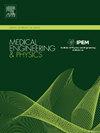基于 TC-UNet++ 和距离分水岭的细胞核图像分割和计数方法
IF 2.3
4区 医学
Q3 ENGINEERING, BIOMEDICAL
引用次数: 0
摘要
细胞核的分割和计数在许多细胞分析应用中起着至关重要的作用。然而,由于细胞核分布密集且边界模糊,因此细胞核分割任务极具挑战性。本文提出了一种新颖的细胞核分割和计数方法。首先,提出了 TC-UNet++ 来实现全局分割。然后,使用距离分水岭方法完成局部分割,分离出图像的粘连和重叠部分。最后,采用计数法获得细胞核的计数数量、面积和质心等信息。在数据科学碗数据集上,TC-UNet++ 的细胞实例分割 Dice 系数达到 89.95%,比原始 U-Net++ 高出 0.23%。与其他方法相比,TC-Net++ 的计数结果提高了 5.09%。在 ALL-IDB 数据集上,TC-UNet++ 的骰子系数达到 83.97%,比原来的 U-Net++ 提高了 7.93%。此外,与其他方法相比,它的计数结果提高了 16.82%。这些结果表明,与其他方法相比,我们的方法具有更完整、更合理的核分割和计数方案。本文章由计算机程序翻译,如有差异,请以英文原文为准。
A method of nucleus image segmentation and counting based on TC-UNet++ and distance watershed
Nucleus segmentation and counting play a crucial role in many cell analysis applications. However, the dense distribution and blurry boundaries of nucleus make nucleus segmentation tasks challenging. This paper proposes a novel segmentation and counting method. Firstly, TC-UNet++ is proposed to achieve a global segmentation. Then, the distance watershed method is used to finish local segmentation, which separate the adhesion and overlap part of the image. Finally, counting method is performed to obtain information on the counting number, area and center of mass of nucleus. TC-UNet++ achieved a Dice coefficient of 89.95% for cell instance segmentation on the Data Science Bowl dataset, surpassing the original U-Net++ by 0.23%. It also showed a 5.09% improvement in counting results compared to other methods. On the ALL-IDB dataset, TC-UNet++ reached a Dice coefficient of 83.97%, a 7.93% increase over the original U-Net++. Additionally, its counting results improved by 16.82% compared to other approaches. These results indicate that our method has a more complete and reasonable nucleus segmentation and counting scheme compared to other methods.
求助全文
通过发布文献求助,成功后即可免费获取论文全文。
去求助
来源期刊

Medical Engineering & Physics
工程技术-工程:生物医学
CiteScore
4.30
自引率
4.50%
发文量
172
审稿时长
3.0 months
期刊介绍:
Medical Engineering & Physics provides a forum for the publication of the latest developments in biomedical engineering, and reflects the essential multidisciplinary nature of the subject. The journal publishes in-depth critical reviews, scientific papers and technical notes. Our focus encompasses the application of the basic principles of physics and engineering to the development of medical devices and technology, with the ultimate aim of producing improvements in the quality of health care.Topics covered include biomechanics, biomaterials, mechanobiology, rehabilitation engineering, biomedical signal processing and medical device development. Medical Engineering & Physics aims to keep both engineers and clinicians abreast of the latest applications of technology to health care.
 求助内容:
求助内容: 应助结果提醒方式:
应助结果提醒方式:


